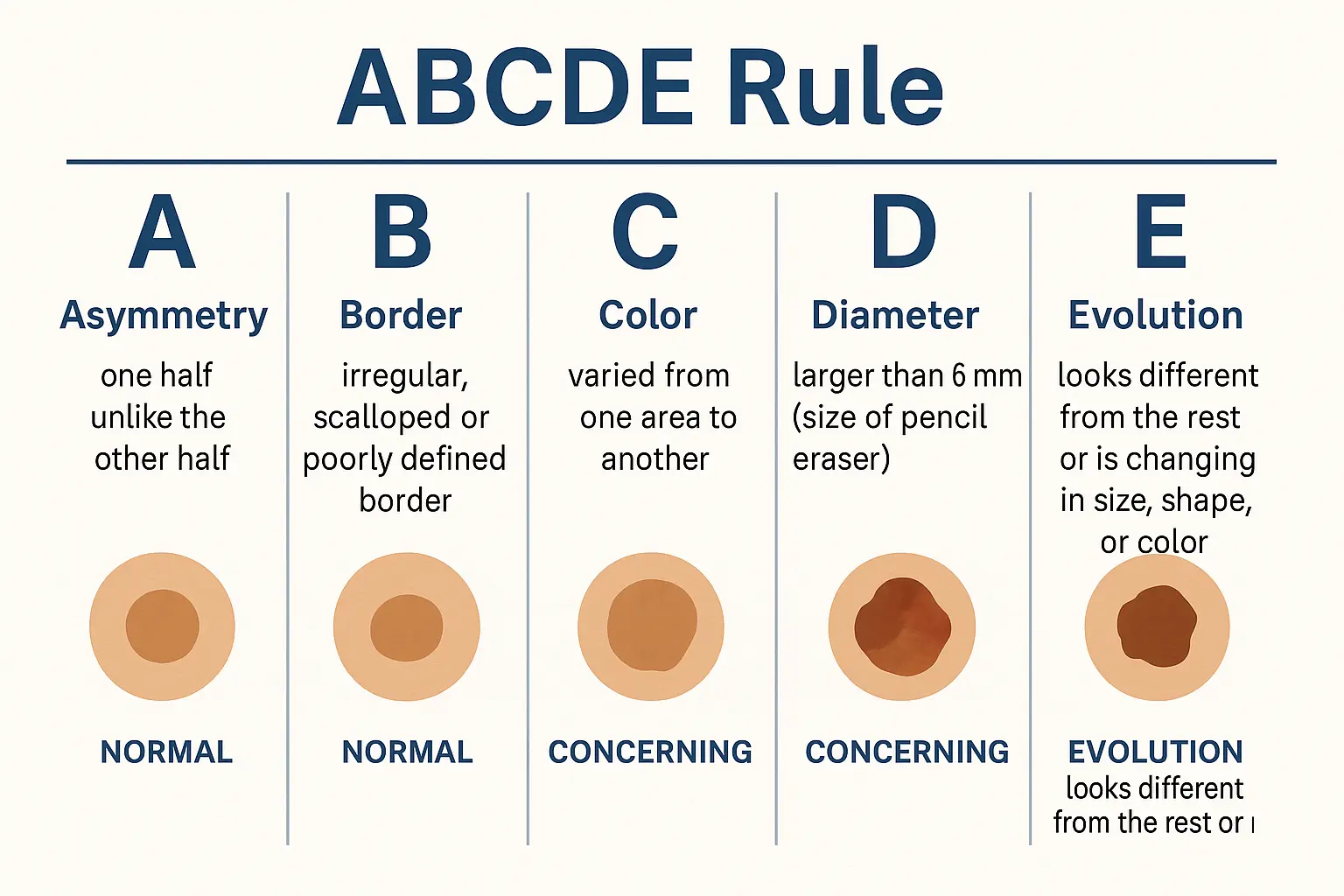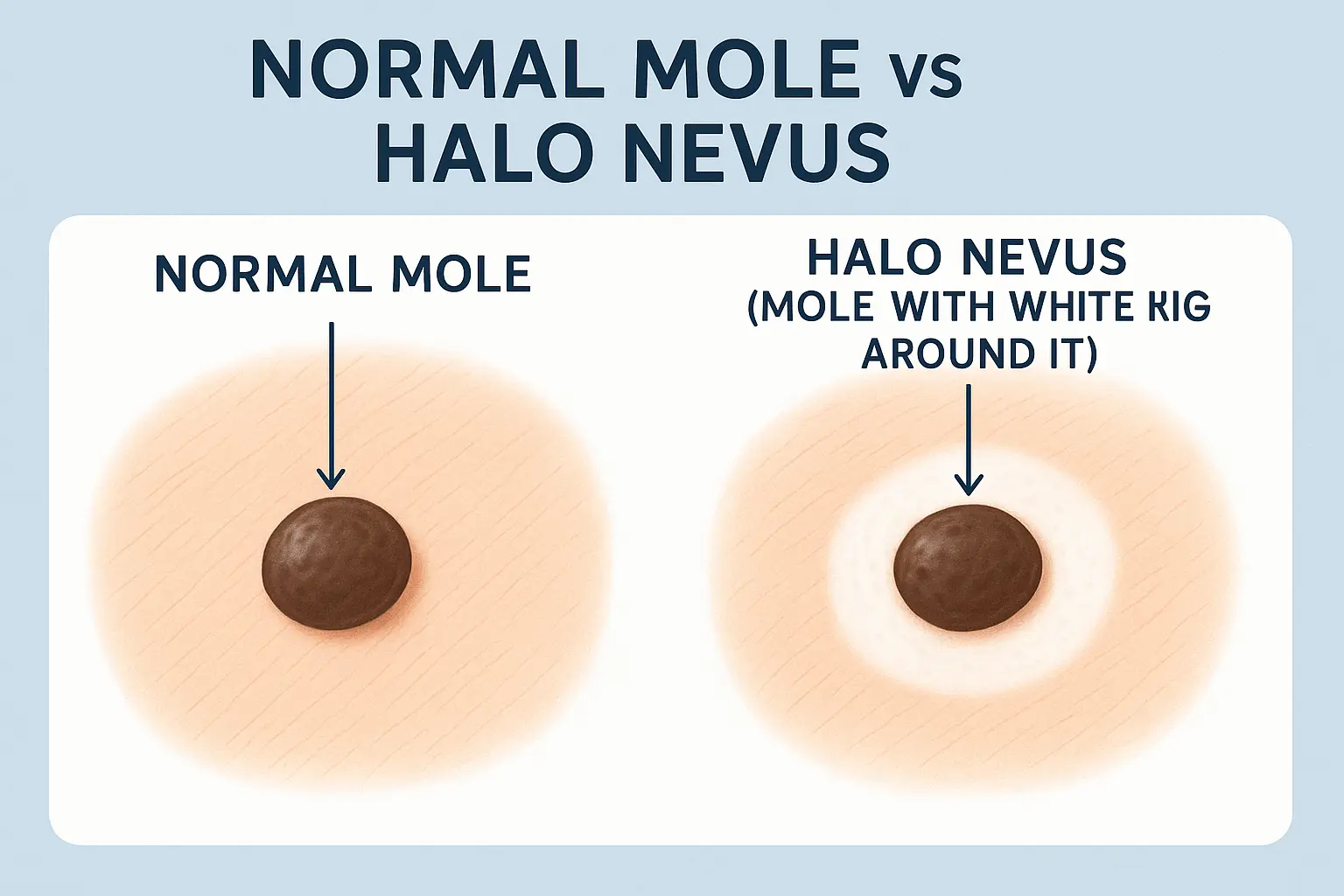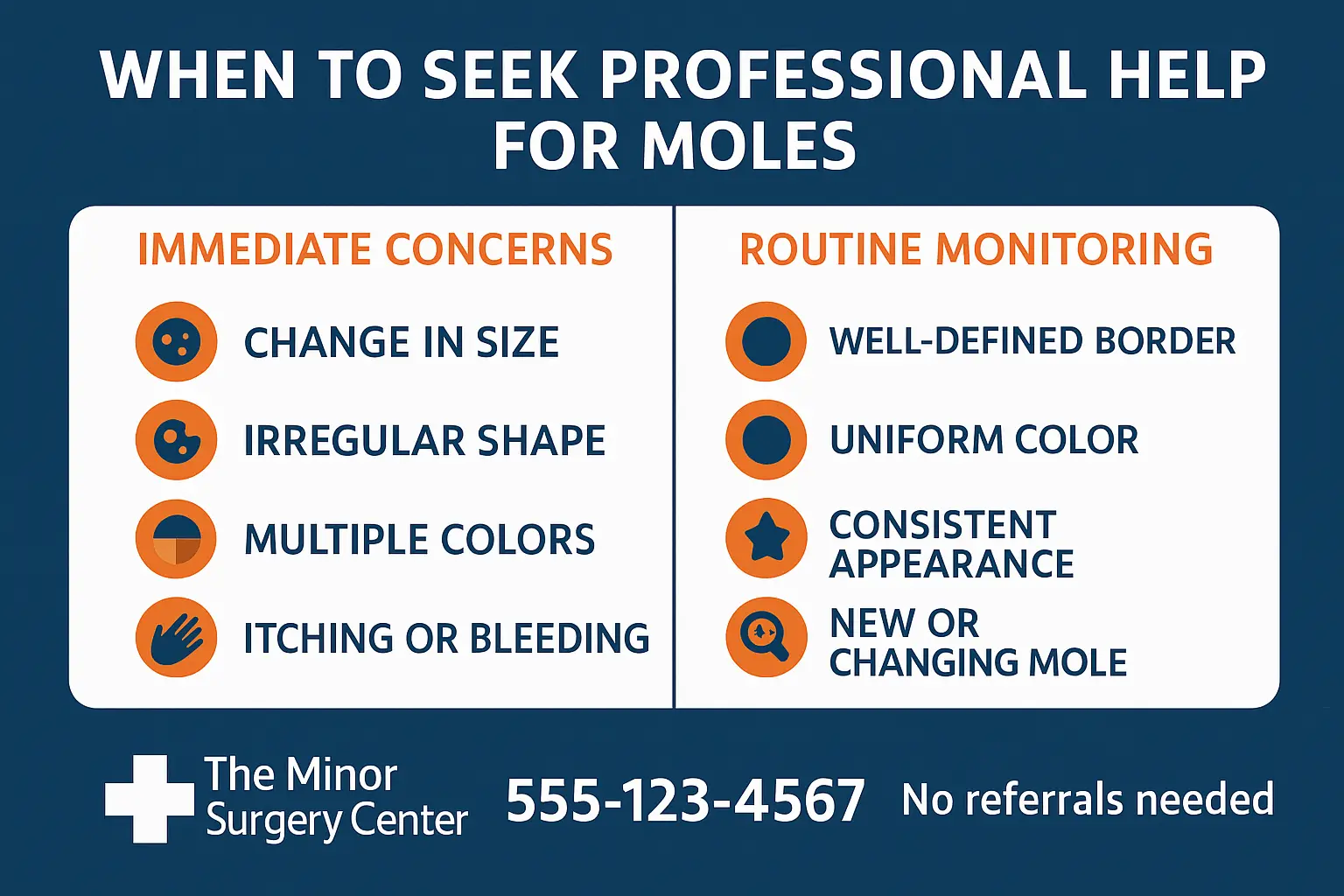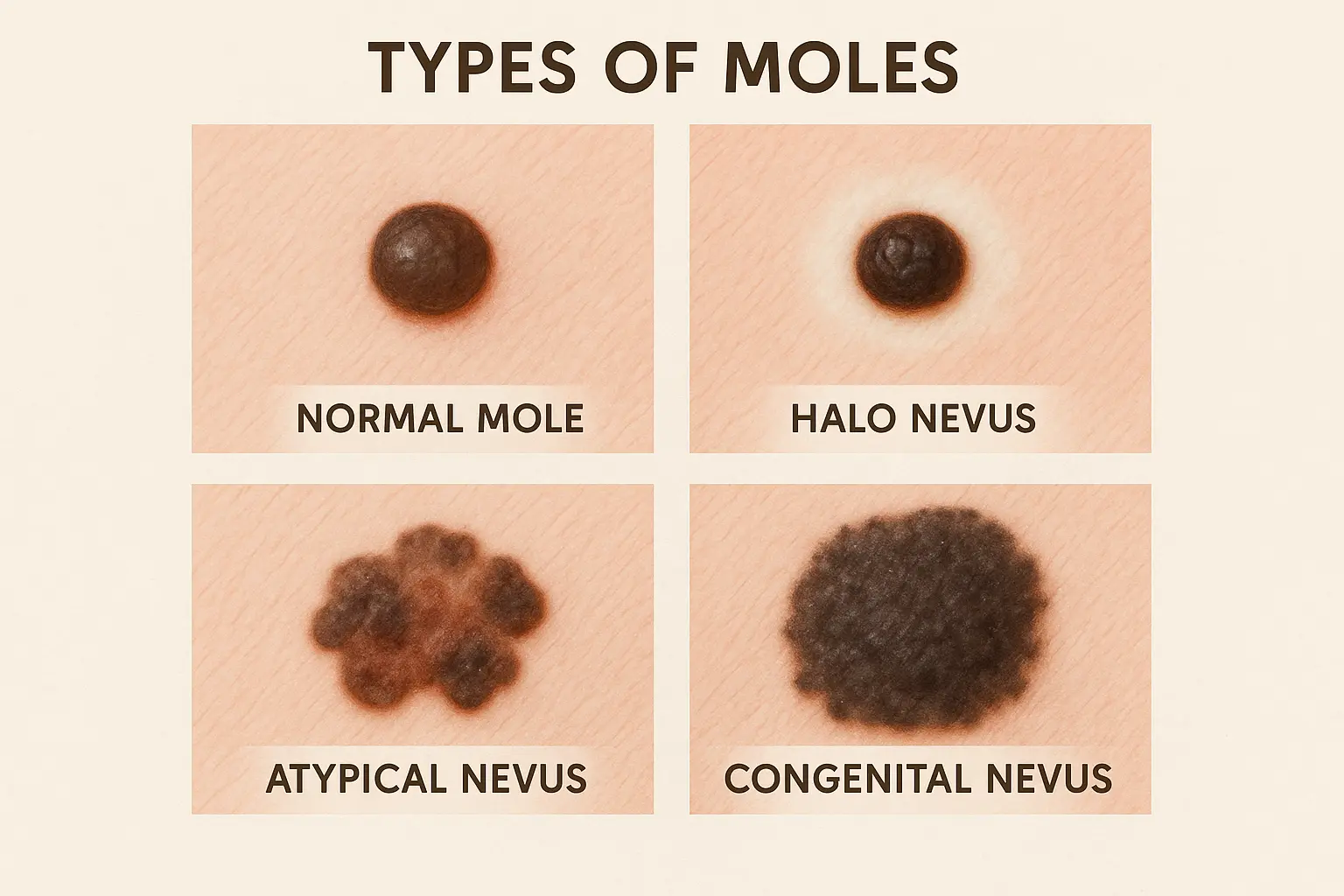When you notice a body mole with ring around it, your first instinct might be worry—and that's completely natural. A ring or halo around a mole can signal important changes that deserve your attention. While not every mole with a ring indicates something serious, understanding what these changes mean can help you make informed decisions about your skin health and when to seek professional care.
• A body mole with ring around it can indicate various conditions, from benign halo nevi to potentially concerning changes requiring medical evaluation
• The ABCDE rule helps identify warning signs: Asymmetry, Border irregularity, Color changes, Diameter over 6mm, and Evolution
• Halo nevi are common benign moles surrounded by white rings, often appearing in children and young adults •
Professional evaluation is essential for any new or changing mole, especially those with rings or halos
• Early detection and removal of concerning moles can prevent serious complications and provide peace of mind
Moles are common skin growths that develop when pigment cells (melanocytes) cluster together. Most people have between 10 and 40 moles on their body, and the majority are completely harmless. However, when you notice changes—particularly a body mole with ring around it—it's important to understand what might be happening.
Typical moles share several features:
When these characteristics change, especially if a ring or halo appears around the mole, it warrants closer attention.
Several factors can create the appearance of a ring around a mole. Understanding these causes helps determine whether the change requires immediate attention or routine monitoring.
The most common cause of a body mole with ring around it is a condition called halo nevus or halo mole. This benign condition occurs when:
Halo nevi characteristics:
Sometimes, a ring around a mole results from:
These inflammatory rings often appear red or pink rather than white and may be accompanied by symptoms like itching or tenderness.
While many rings around moles are benign, some may indicate more serious conditions:

When examining any body mole with ring around it, healthcare professionals use the ABCDE rule to assess potential concerns:
Normal moles are symmetrical. If you draw a line through the middle, both halves should match. Asymmetrical moles or rings may indicate abnormal growth patterns.
Healthy moles have smooth, well-defined borders. Irregular, jagged, or blurred edges—including around any ring formation—can be warning signs.
Uniform color is typical for benign moles. Multiple colors within the mole or ring, including shades of brown, black, red, white, or blue, may indicate concerning changes.
Moles larger than 6mm (about the size of a pencil eraser) require attention, especially if they're growing or developing rings.
Any change in size, shape, color, elevation, or new symptoms like bleeding, itching, or crusting should prompt professional evaluation.
Recognizing when a body mole with ring around it needs professional attention can make a significant difference in outcomes. You should schedule an evaluation if you notice:
Even if changes seem minor, professional evaluation is wise for:
At The Minor Surgery Center, our experienced team understands that discovering changes in your moles can be concerning. We provide thorough evaluations in a comfortable, professional environment without the stress of long wait times.
Understanding different types of moles that can develop rings helps you better communicate with healthcare providers and understand your condition.
Some people are born with moles that later develop rings. These congenital nevi:
Most body moles with rings around them are acquired nevi that develop halos later in life:
Sometimes called dysplastic nevi, these moles have unusual features:

When you visit a healthcare provider about a body mole with ring around it, they'll use several diagnostic approaches to evaluate your condition.
The initial assessment includes:
This specialized technique involves:
A biopsy may be recommended if:
The skilled surgeons at our clinic are experienced in performing biopsies and mole removals with minimal discomfort and excellent cosmetic outcomes.
When a body mole with ring around it requires treatment, several options are available depending on the specific situation and level of concern.
For benign-appearing halo nevi:
Removal may be recommended for:
Proper aftercare ensures optimal healing:
Our team at The Minor Surgery Center provides comprehensive post-operative care to ensure your comfort and the best possible outcomes.
While you can't prevent all moles from developing rings, you can reduce your risk of concerning changes and skin cancer.
Monthly self-checks help identify changes early:
Regular dermatological examinations:

Discovering a body mole with ring around it can create anxiety, but understanding your condition and having a clear plan helps you feel more in control.
It's natural to worry about mole changes:
Simple changes can improve your skin health:
Understanding the financial aspects of mole evaluation and removal helps you plan for necessary care.
Most insurance plans cover:
Some procedures may require payment:
Our cost estimator tool can help you understand potential expenses and plan accordingly.
Modern dermatology employs sophisticated tools to evaluate moles with rings, improving diagnostic accuracy and patient outcomes.
This technology offers:
For complex cases:
Emerging AI tools assist in:

Certain groups require special attention when dealing with moles that develop rings.
Halo nevi are particularly common in young people:
Pregnancy can affect mole appearance:
Those with weakened immune systems need:
The field of dermatology continues advancing, offering hope for better diagnosis and treatment of moles with concerning features.
Emerging research explores:
New technologies promise:
Future options may include:
Managing a body mole with ring around it often involves multiple healthcare professionals working together for optimal care.
Your first point of contact for:
Specialists offering:
For removal procedures:
At The Minor Surgery Center, our multidisciplinary approach ensures you receive comprehensive care tailored to your specific needs.
Not necessarily. Many rings around moles, particularly halo nevi, are benign. However, any new or changing feature should be evaluated by a healthcare professional to rule out concerning conditions.
While not usually an emergency, you should schedule an evaluation within a few weeks of noticing the ring. If the mole is bleeding, rapidly changing, or causing significant symptoms, seek care sooner.
Yes, many halo nevi gradually fade over months to years. The central mole may disappear completely, leaving normal skin. However, this process should be monitored by a healthcare provider.
Modern surgical techniques minimize scarring, but some degree of scarring is possible with any surgical procedure. Your surgeon will discuss expected outcomes and scar management strategies.
While you can't prevent all mole changes, protecting your skin from UV damage and maintaining good overall health may reduce the risk of concerning developments.
For more detailed answers to common questions, visit our comprehensive FAQ section.
When dealing with a body mole with ring around it, professional evaluation provides several crucial benefits that self-monitoring alone cannot offer.
Healthcare professionals bring:
Professional evaluation offers:
When problems are identified early:
If you've noticed a body mole with ring around it, taking action is straightforward and important for your health and peace of mind.
Your appointment will typically include:
To make the most of your visit:
Ongoing management may include:
Discovering a body mole with ring around it naturally raises concerns, but understanding what these changes mean empowers you to take appropriate action. While many rings around moles—particularly halo nevi—are completely benign, professional evaluation is essential to distinguish normal variations from potentially concerning changes.
The key to optimal outcomes lies in prompt professional assessment, regular monitoring, and maintaining open communication with your healthcare team. Modern diagnostic techniques and treatment options offer excellent results when intervention is needed, often with minimal discomfort and excellent cosmetic outcomes.
Remember that taking action when you notice changes in your moles demonstrates good self-care and health awareness. Whether your body mole with ring around it requires simple monitoring or active treatment, addressing your concerns promptly provides peace of mind and protects your long-term health.
Ready to get the expert care you deserve? Contact The Minor Surgery Center today to schedule your evaluation. Our experienced team provides thorough assessments in a comfortable, professional environment—no referrals needed, no long wait times, just expert care delivered with compassion. Your skin health is too important to leave to chance, and we're here to help you feel confident and informed about your care.
Don't let uncertainty about a mole with a ring around it cause ongoing worry. Take the first step toward peace of mind by scheduling your consultation today. Our team is ready to provide the clear answers and expert care you need to move forward with confidence.